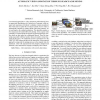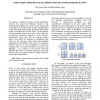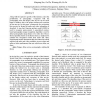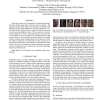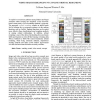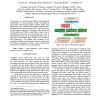ICMCS
2008
IEEE
14 years 6 months ago
2008
IEEE
Conventional approaches to video annotation predominantly focus on supervised identification of a limited set of concepts, while unsupervised annotation with infinite vocabulary...
ICMCS
2008
IEEE
14 years 6 months ago
2008
IEEE
In this paper, we specifically propose the Weber-Fechner Law-based human attention model for semantic scene analysis in movies. Different from traditional video processing techniq...
ICMCS
2008
IEEE
14 years 6 months ago
2008
IEEE
∗∗∗∗ In 2002, the video coding community faced the emergence of a new video coding paradigm, the so-called Wyner-Ziv video coding, which was represented by two early soluti...
ICMCS
2008
IEEE
14 years 6 months ago
2008
IEEE
The support of variable block-sizes, though significantly improves the compression efficiency, imposes a big computational challenge on an H.264 encoder. In this paper, we present...
ICMCS
2008
IEEE
14 years 6 months ago
2008
IEEE
ICMCS
2008
IEEE
14 years 6 months ago
2008
IEEE
Conventional stereo audio material is often produced using amplitude panning techniques to achieve flexible positioning of sound sources with a limited number of loudspeakers. Co...
ICMCS
2008
IEEE
14 years 6 months ago
2008
IEEE
The 3D tele-immersive (3DTI) environments are emerging as the next generation technique for tele-communication. In this paper, we present a novel and generic interface for view co...
ICMCS
2008
IEEE
14 years 6 months ago
2008
IEEE
This paper presents a novel approach to automatically identify characters in films using audio visual cues and text analysis. The approach consists of three stages: (i) frontal f...
ICMCS
2008
IEEE
14 years 6 months ago
2008
IEEE
To exploit co-occurrence patterns among features and target semantics while keeping the simplicity of the keywordbased visual search, a novel reranking methods is proposed. The ap...
ICMCS
2008
IEEE
14 years 6 months ago
2008
IEEE
In this paper, by considering the multiple spatial-temporal characteristic of visual perception system, we propose a novel home video attention analysis method. Firstly, each fram...
